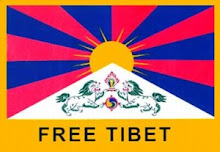

«
Figli di origine oscura non è una semplice rilettura di canti anarchici; siamo su di un altro piano, in una dimensione che supera i precedenti tentativi di reinterpretare la tradizione di matrice libertaria, fino a questo momento poco ricettiva nei confronti di un suono non conservatore. Merito de
Les Anarchistes, il cui lavoro ha aggiornato il “vissuto anarchico” in un contesto nuovo, nel quale l'ammeticciamento degli arrangiamenti assume un ruolo assolutamente capitale. Il collettivo toscano centrifuga il rock con il free-jazz, l'elettronica, il folk. E il risultato è stupefacente: dimenticate i vecchi (e rispettabili, sia chiaro) stilemi della canzone italiana anarchica – cioè chitarra acustica e via ad urlare di rabbia – perché
Les Anarchistes hanno scelto una formula tesa a privilegiare una struttura aperta a sonorità che con la tradizione hanno poco a che spartire. I vecchi canti assumono una veste nuova, e certe cose come "Su fratelli pugnamo da forti", "O Gorizia tu sei maledetta", sono rilette con l'intenzione di farle (ri)vivere con uno spirito 'altro', pur continuando a tenere alto il valore di testi la cui attualità continua a rimanere viva. Il cd, nel suo esplicito elogio all'anarchismo, riesce, comunque, a non limitare la sua forma espressiva al solo campo politico-insurrezionale: con "Les anarchistes", "Tu non dici mai niente", "Il tuo stile" (queste ultime due riprese recentemente anche dai
Têtes de Bois), i toscani omaggiano un grande come
Leo Ferrè, mentre il testo di "The mask of anarchy" è tratto, nientedimeno, da due poesie del visionario
Blake e del romantico
Shelley. Preziose le collaborazioni:
Raiz degli
Almamegretta, il fisarmonicista
Antonello Salis e
Blaine L. Reininger dei
Tuxedomoon e […] altri. […] Si sentiva il bisogno di un disco come questo, per la sua passione, il suo sentimento, il suo ardore. […]
Les Anarchistes non sanno cosa sia la retorica: lo scopo della band sembra quello di offrire ulteriori motivi per non dimenticare che esistono altri modi di vedere il mondo. Dire che ci riescono bene, è sin troppo limitativo.» (
Rockit)
 «Si fuéramos el RDL le pondríamos a esto la posible etiqueta de "retro-emo-core-cántico-populare", pero bueno, como aun no se nos ha subido la historia a la cabeza, diremos que con ese engendro calificativo queda medianamente definido este original proyecto, aunque ellos mismos en su propia web (www.lesanarchistes.com) se han dado en llamar electro nu-folk o electro combat-folk. Se trata pues, básicamente, de una revisión y puesta de actualidad, meramente en lo formal claro, de las canciones anarquistas y libertarias del siglo pasado a través de las nuevas tecnologías musicales. Se toma una base de letras y proclamas que se aderezan con un poco de indietronica, new jazz electrónico, el rock mas avanzado y unas esencias de música étnica, y con todo esto se consigue a veces un genial y compacto producto en canciones como por ejemplo "su fratelli pugnamo da forti" o "Les anarchistes", aunque en otras el exceso de alguno de los componentes lleva al fracaso o al galimatías, como es el caso de "Tammurriata delle mondine" donde unas voces chamánicas hacen de ésta, una canción digna de una producción tipo Enigma o Spirit, o las demasiado jazzísticas para nuestros gustos "Un bolero per Goliardo", "Dai monti di Carrara" o "The mask of anarchy", donde el saxo y el free jazz nos satura bastante a pesar de ser magníficas composiciones, e incluso la excesivamente discotequera "Battan l'otto". Sin embargo, en las más cercanas a la esencia original, donde las voces están apoyadas por un entorno no demasiado agobiante, brillan con esplendor las frases que fácilmente nos evocan esas imágenes mudas de lucha y miseria en blanco y negro. Este es el caso de la rockera "Sante Caserio" o la propia versión de "Les anarchistes" de Léo Ferré, casi provocan que te entren ganas de salir a la calle a protestar por algo, o incluso de leer a Marx... Son además en los pasajes mas sosegados como en "Il galeone", "Tu non dici mai niente" o la voz femenina en "Il tuo stile", donde consiguen, a nuestro entender, sintetizar el espíritu de la idea. Luego tenemos las más etnicas, folkies o world-music, como "Un di' discenderemo" con presencia de guitarras acústicas, los violines de "Lacrime 'e cundannate" o la casi Jethro Tull "O Gorizia tu sei maledetta". Cerrándose el trabajo con la postrera "Un bolero per Goliardo" donde la presencia jazz va in-crescendo en plena voragine que nos aboca a la proclama final.
«Si fuéramos el RDL le pondríamos a esto la posible etiqueta de "retro-emo-core-cántico-populare", pero bueno, como aun no se nos ha subido la historia a la cabeza, diremos que con ese engendro calificativo queda medianamente definido este original proyecto, aunque ellos mismos en su propia web (www.lesanarchistes.com) se han dado en llamar electro nu-folk o electro combat-folk. Se trata pues, básicamente, de una revisión y puesta de actualidad, meramente en lo formal claro, de las canciones anarquistas y libertarias del siglo pasado a través de las nuevas tecnologías musicales. Se toma una base de letras y proclamas que se aderezan con un poco de indietronica, new jazz electrónico, el rock mas avanzado y unas esencias de música étnica, y con todo esto se consigue a veces un genial y compacto producto en canciones como por ejemplo "su fratelli pugnamo da forti" o "Les anarchistes", aunque en otras el exceso de alguno de los componentes lleva al fracaso o al galimatías, como es el caso de "Tammurriata delle mondine" donde unas voces chamánicas hacen de ésta, una canción digna de una producción tipo Enigma o Spirit, o las demasiado jazzísticas para nuestros gustos "Un bolero per Goliardo", "Dai monti di Carrara" o "The mask of anarchy", donde el saxo y el free jazz nos satura bastante a pesar de ser magníficas composiciones, e incluso la excesivamente discotequera "Battan l'otto". Sin embargo, en las más cercanas a la esencia original, donde las voces están apoyadas por un entorno no demasiado agobiante, brillan con esplendor las frases que fácilmente nos evocan esas imágenes mudas de lucha y miseria en blanco y negro. Este es el caso de la rockera "Sante Caserio" o la propia versión de "Les anarchistes" de Léo Ferré, casi provocan que te entren ganas de salir a la calle a protestar por algo, o incluso de leer a Marx... Son además en los pasajes mas sosegados como en "Il galeone", "Tu non dici mai niente" o la voz femenina en "Il tuo stile", donde consiguen, a nuestro entender, sintetizar el espíritu de la idea. Luego tenemos las más etnicas, folkies o world-music, como "Un di' discenderemo" con presencia de guitarras acústicas, los violines de "Lacrime 'e cundannate" o la casi Jethro Tull "O Gorizia tu sei maledetta". Cerrándose el trabajo con la postrera "Un bolero per Goliardo" donde la presencia jazz va in-crescendo en plena voragine que nos aboca a la proclama final.
En resumen, una propuesta como mínimo original, a pesar de basarse en "fusilar" literalmente algo tan antiguo y utópico como la lucha por la jornada laboral de "n" horas (donde "n" siempre es mayor estricto de 8), que a tenor de nuestros delicados gustos solo tiene el fallo de un exceso de jazz en casi todos los cortes, pero con lo que tenemos que transigir puesto que se trata de recrear el sonido de la época, con sonidos analógicos de viejos sintetizadores, saxo, trombones y flautas en libres improvisaciones al mas puro estilo free jazz de los 40.
Así pues, esta original proposición, producida por Nicola Toscano y Max Guerrero recibió entre otros el prestigioso "Premio Ciampi" al mejor álbum de debut del año 2002. Por ello, dejamos en sus propias palabras la definición exacta de este proyecto: "...¿Cómo podemos definir nuestra música? No lo sabemos y de hecho no nos importa. El canto de las multitudes es realmente lo que nos importa, piezas de la historia cantadas a oídos sordos, melodías cristalinas que ocupan sonidos desconocidos... y la eterna memoria de Léo Ferré que dio nombre a este proyecto".» (nadadora)
 English bio & reviews: http://www.lesanarchistes.com/bioEN.html
English bio & reviews: http://www.lesanarchistes.com/bioEN.html
Link in comments
 Also, I'm searching for any recordings by the great bolivian singer Gladys Moreno, impossible to find here in Italy. If you have one, please send it to the aforementioned address. Thanx a lot in advance!
Also, I'm searching for any recordings by the great bolivian singer Gladys Moreno, impossible to find here in Italy. If you have one, please send it to the aforementioned address. Thanx a lot in advance!













































